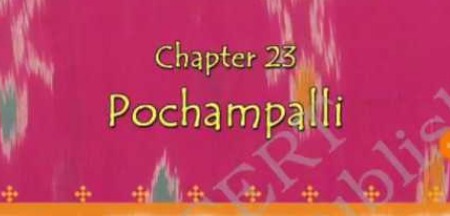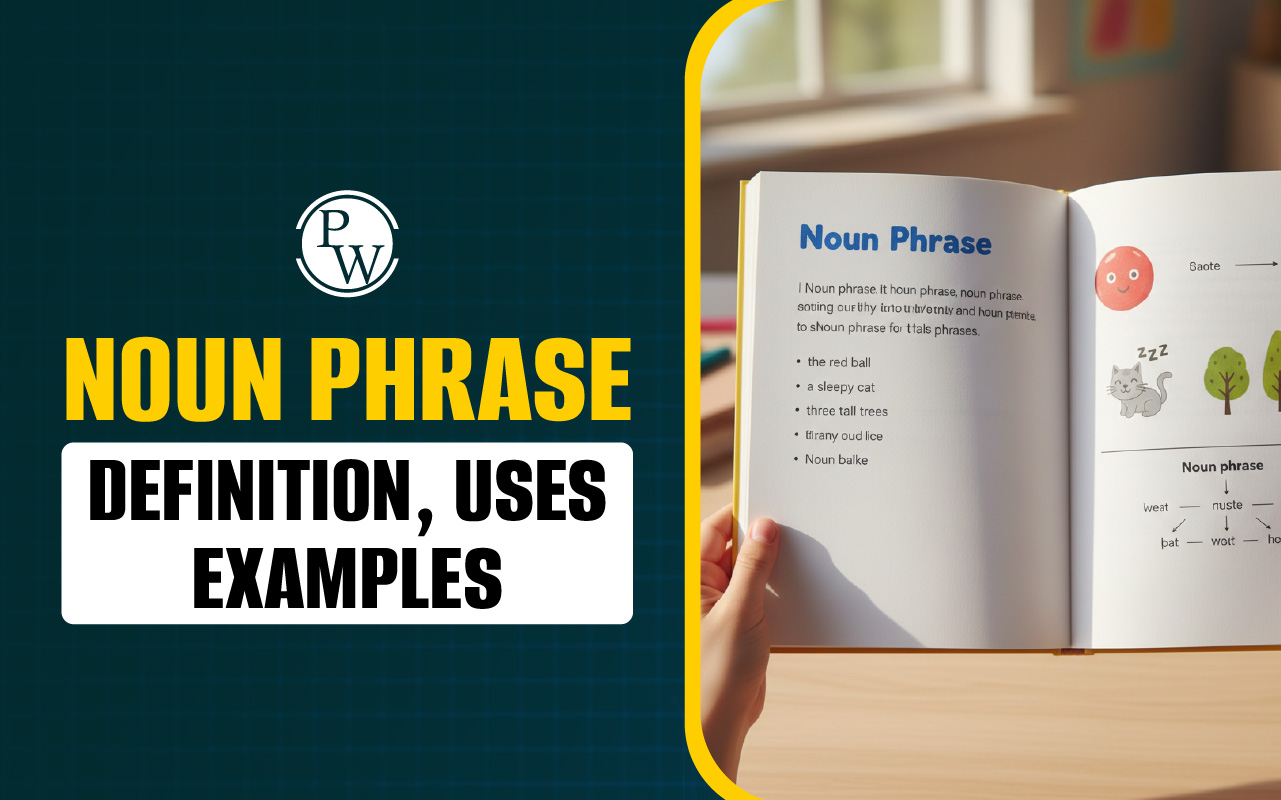
NCERT Solutions for Class 4 EVS Chapter 23: Chapter 23 of Class 4 EVS, Pochampalli, introduces students to the traditional craft of weaving Pochampalli sarees, which are famous in the town of Pochampalli, Telangana.
The chapter takes readers through the journey of Bhupen, a young boy who visits a weavers’ village and learns about the intricate process of weaving. It highlights the hard work of artisans who use cotton and silk threads, which are dyed and woven into beautiful patterns on handlooms. Through this lesson, students are encouraged to appreciate traditional crafts and recognize the rich cultural heritage of India. It also fosters respect for the craftsmanship that goes into making handloom products and the value of preserving such age-old traditions.NCERT Solutions for Class 4 EVS Chapter 23 Overview
NCERT Solutions for Class 4 EVS Chapter 23 Pochampalli explores the traditional art of weaving and the famous handloom sarees from Pochampalli, a town in Telangana. The chapter introduces students to the lives of weavers and their craft, emphasizing the significance of this art in the cultural and economic landscape of the region. Through the narrative, we meet Bhupen, a young boy who visits a weaver's village and learns about the labor-intensive process of making Pochampalli sarees. The story highlights how the weavers use cotton and silk threads, which are then dyed and woven into intricate patterns on handlooms. It also teaches students about teamwork, as weaving involves coordination among family members. The chapter emphasizes the importance of preserving traditional crafts and how the skills of artisans are passed down through generations.Related links-
NCERT Solutions for Class 4 EVS Chapter 23 PDF
Here we have provided NCERT Solutions for Class 4 EVS Chapter 23 Pochampalli PDF for the students so that they can easily access these solutions without internet. These solutions will help them to prepare better for their exams.NCERT Solutions for Class 4 EVS Chapter 23 PDF
NCERT Solutions for Class 4 EVS Chapter 23 Pochampalli
Below we have provided NCERT Solutions for Class 4 EVS Chapter 23 -
Discuss
1. Vani and Prasad learnt this beautiful craft from their family members. When they grow up, do you think they will be able to teach their children the skills of this craft?
Answer:
Yes, they would be able to impart to their children the exquisite craft that they learnt from their family members.Write in Your Notebook
1. Have you ever seen anybody weave something on a loom? What were they weaving and where?
Answer:
Yes, I have encountered weavers in the textile sector. They were at Kancheepuram, weaving sarees.2. The threads of a saree are dyed. Do you know of any other thing that is dyed?
Answer:
Woollen thread is also dyed.3. If you visit Vani’s village, it seems as if the entire village is weaving sarees. Do you know of any other work which many people living in one place do?
Answer:
Yes, people do knitting as well.4. Do they make some articles?
Answer:
They make earthen pots and cookware.5. Find out the process of making the article? What are the different steps?
Answer:
First, some fine earth dough is made. Next, the dough is placed on a Potter's wheel—a wooden wheel. The clay dough is shaped into the required shapes using a Potter's wheel. In this manner, many pots and toys are created, finally sun-dried, and cooked in a kiln. Finally, they are coloured based on specifications.6. Do men and women do different kinds of work to make this article?
Answer:
No, both of them do the same work to make the article.7. Do children also contribute to making this article?
Answer:
Yes, children also contribute to making the articles.Find out and Write
1. Talk to an ironsmith, a carpenter and a potter about the nature of their work.
Answer:
Ironsmith – makes things made of iron Carpenter – makes wooden articles like table, toys etc. Potter – makes earthen pots and toys2. Where did they learn to do their work?
Answer:
Usually, they learn it from parents and family members.3. What else did they need to learn to be able to do this work?
Answer:
To be able to carry out this work, they must be imaginative, artistic, and creative.4. Have they taught this work to anybody in their family or to anyone else?
Answer:
Yes, they taught to others as well.5. The table below has a list of different kinds of work that people do. Do you know people who do such work? Write their names in the first column. In the next column, write from whom they have learnt their work.
| Kind of Work | Name of People Who Do This Work | Where Did They Learn This Work from? |
| Cloth weaving | Prasad and Vani’s parents | From their elders |
| Cooking | ||
| Cycle repair | ||
| Flying aeroplanes | ||
| Sewing and embroidery | ||
| Singing | ||
| Making shoes | ||
| Flying kites | ||
| Farming | ||
| Cutting hair |
Answer:
| Kind of Work | Name of People Who Do This Work | Where Did They Learn This Work from? |
| Cloth weaving | Prasad and Vani’s parents | From their elders |
| Cooking | Martin Paul | In a Hotel Management Institute |
| Cycle repair | Raju and Das | From their elders |
| Flying aeroplanes | Sai Preetham | In a flying school |
| Sewing and embroidery | Sushmitha | From his mother |
| Singing | Yuvan Shankar Raja | From his father |
| Making shoes | Naveen and Adil | Institute in Fashion Technology |
| Flying kites | Brithul | From his elder cousin |
| Farming | Ganesh and Ramesh | From their elders |
| Cutting hair | Rudra and Balaji | From his father |
Benefits of NCERT Solutions for Class 4 EVS Chapter 23
The NCERT Solutions for Class 4 EVS Chapter 23, "Pochampalli", offer several benefits for students:Concept Clarity : The solutions provide clear and concise answers, helping students understand the traditional art of weaving and the cultural significance of Pochampalli sarees.
Simplified Explanations : Difficult concepts related to the weaving process, teamwork, and challenges faced by artisans are explained in simple language for better comprehension.
Cultural Awareness : Students develop an appreciation for India's diverse cultural heritage and learn about the importance of traditional crafts like Pochampalli weaving.
Answer Accuracy : The solutions are aligned with the NCERT curriculum, ensuring that the answers meet examination standards and requirements.
Better Preparation : These solutions help students in preparing for exams by providing well-structured answers and a clear understanding of the chapter's key themes.
Critical Thinking : The chapter encourages students to reflect on the importance of supporting local artisans and the impact of modern industrialization on traditional crafts.
NCERT Solutions for Class 4 EVS Chapter 23 FAQs
Why is Pochampalli famous class 4?
Why is the special cloth woven called Pochampalli?
What is Pochampalli short notes?
What is Pochampalli silk also called?
Is NCERT Solutions for Class 4 EVS Chapter 23 Pochampalli useful?










